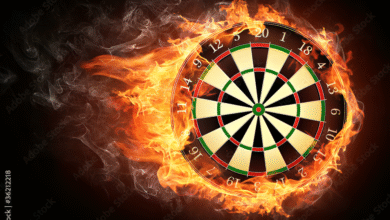The Most Watched Sports Match in the World The Ultimate Global Spectacle

Imagine a single event that stops the planet in its tracks—billions of eyes glued to screens, streets emptying out, and conversations halting worldwide. That’s the magic of the most watched sports match in the world: the FIFA World Cup Final. Every four years, this electrifying clash of soccer titans doesn’t just crown a champion; it unites humanity in a frenzy of passion, drama, and unforgettable moments. Whether you’re a die-hard fan chanting in the stands or a casual viewer caught up in the hype, the World Cup Final has a way of pulling you in. In this deep dive, we’ll explore why this match reigns supreme, its jaw-dropping viewership stats, and what makes it an enduring icon of global culture. Buckle up—it’s time to kick off!
Why the FIFA World Cup Final Claims the Crown as the Most Watched Sports Match in the World
Soccer, or football as it’s known to most of the globe, isn’t just a game—it’s a religion. And at its holiest summit sits the FIFA World Cup Final, a showdown that has consistently shattered viewership records since its inception in 1930. But what elevates it above other mega-events like the Super Bowl or the Olympics? Simple: sheer scale and universality.
The World Cup isn’t confined to one nation or league; it draws from 211 member associations, representing over 4 billion potential fans. The final match alone, pitting two of the world’s best teams against each other after weeks of grueling qualifiers and group stages, condenses months of buildup into 90 pulse-pounding minutes (plus extra time and penalties, of course). In 2022, the final between Argentina and France wasn’t just a game—it was a cultural earthquake, watched by an estimated 1.5 billion people live, with cumulative tournament viewership soaring past 5 billion.
This isn’t hype; it’s backed by FIFA’s own data and independent audits. Compare that to the Super Bowl’s 124 million U.S.-centric audience or the NBA Finals’ 20 million, and the gap is galactic. The most watched sports match in the world thrives on inclusivity—no paywalls for the masses in many countries, free broadcasts on public TV, and streaming options that blanket the earth. From Rio’s favelas to Tokyo’s high-rises, everyone tunes in.
A Storied History: From Humble Beginnings to Global Domination
To truly appreciate the most watched sports match in the world, we need to rewind the clock. The inaugural World Cup in 1930, hosted by Uruguay, drew just 13 teams and a smattering of European squads who braved a stormy Atlantic crossing. The final? Hosts Uruguay edging out Argentina 4-2 in front of 68,000 delirious fans in Montevideo. No TV cameras, no global feeds—just raw, unfiltered joy.
Fast-forward to the television era. The 1954 “Miracle of Bern,” where West Germany stunned Hungary, was the first final beamed across borders, igniting soccer’s TV boom. By 1966, England’s home victory over West Germany (thanks to that controversial Geoff Hurst hat-trick) pulled in 32 million UK viewers alone—a national record at the time.
The real explosion came in the 1980s and ’90s. Brazil’s 1986 magic with Zico and Sócrates, or Diego Maradona’s infamous “Hand of God” goal, turned the final into must-see TV. Viewership ticked up steadily: 1 billion for the 1998 France vs. Brazil thriller, 1.1 billion for 2002’s Brazil vs. Germany. But 2010’s Spain vs. Netherlands final in Johannesburg marked a tipping point, with 909 million live viewers, proving Africa’s hosting could amplify the signal worldwide.
Enter the digital age. The 2014 Brazil vs. Germany semi-final (that 7-1 demolition) racked up 900 million views in 90 minutes, but the finals have always saved their best for last. The 2022 Qatar showdown? It peaked at 1.5 billion, with social media buzz adding another layer—over 300 million tweets during the match. As we eye the 2026 edition across North America, experts predict it could hit 2 billion, thanks to expanded teams (48 total) and 4K streaming.
What ties these eras together? Underdog stories, superstar showdowns, and that electric tension of national pride on the line. The World Cup Final isn’t just sport; it’s a mirror to our world’s triumphs and heartbreaks.
Breaking Down the Numbers: Viewership Stats That’ll Blow Your Mind
Let’s get nerdy for a second—because nothing underscores the most watched sports match in the world like cold, hard stats. FIFA reports that the 2022 tournament reached 5.4 billion unique viewers, or 67% of the global population. The final alone averaged 1.5 billion, with peaks hitting 1.7 billion during Messi’s penalty heroics.
Geographically, it’s a mosaic: Europe contributes 40% of viewers, Asia 30%, the Americas 20%, and Africa/Oceania the rest. In India, a non-qualifier, 500 million tuned in—more than many locals watch their own cricket. China? Over 400 million for the final, despite no team in the mix.
Contrast this with runners-up. The 2011 Cricket World Cup Final (India vs. Pakistan) drew 558 million, massive in the subcontinent but niche elsewhere. The Olympics opening ceremony hits 3-4 billion cumulatively, but no single “match” compares. The Tour de France? 3.5 billion stage views spread over weeks. The Champions League Final? A respectable 380 million, but it’s club vs. club, lacking that international fever.
Why the dominance? Accessibility plays huge—FIFA mandates free-to-air broadcasts in host nations and low-cost rights globally. Add mobile apps, VR experiences, and fan zones in 200+ countries, and you’ve got a viewership machine. Post-2022, FIFA’s digital platforms logged 24.5 billion video views online. The most watched sports match in the world isn’t static; it’s evolving with tech, ensuring even remote villages in Mongolia get the action.
| Event | Peak Live Viewers (Millions) | Cumulative Viewers (Billions) | Year |
| FIFA World Cup Final | 1,500 | 5.4 | 2022 |
| Cricket World Cup Final | 558 | 2.2 | 2011 |
| Super Bowl | 124 | N/A | 2023 |
| Olympics Opening | 1,000 (est.) | 3.6 | 2008 |
| Champions League Final | 380 | N/A | 2019 |
This table? A snapshot of supremacy. The World Cup Final laps the field, proving soccer’s kingly status.
The Human Element: Stars, Drama, and Heart-Stopping Moments
Behind the billions are stories that stick. The most watched sports match in the world thrives on narrative—immigrants like Lionel Messi lifting the trophy for Argentina in 2022, silencing critics after decades of near-misses. Or France’s 2018 triumph, a multicultural squad reflecting a nation’s diversity.
Penalties are the Final’s secret sauce: 30% end in shootouts, turning athletes into gladiators. Remember 2006? Zidane’s headbutt exit in the France-Italy final, watched by 1 billion, sparked global debates on sportsmanship. Or 1994’s Brazil vs. Italy, where Baggio’s miss etched eternal agony.
These moments ripple beyond the pitch. Economists peg the Final’s economic boost at $10-15 billion per tournament—tourism, merch, betting. Socially? It fosters unity; during 2022, Google searches for “how to watch World Cup” spiked 500%, and #WorldCup trended in 150 languages.
Critics point to controversies—FIFA corruption, Qatar’s labor issues—but fans argue the Final’s purity transcends. It’s a reminder: in a divided world, 90 minutes can heal.
Cultural Impact: How the Most Watched Sports Match Shapes Society
Forget the scoreline; the most watched sports match in the world is a cultural juggernaut. It influences fashion (those replica jerseys outsell any runway show), music (Shakira’s “Waka Waka” hit a billion streams), and even politics (leaders pausing campaigns to watch).
In Brazil, Carnival pales next to World Cup fever—beaches empty, samba stops. In England, pubs overflow; “It’s Coming Home” becomes a summer anthem. For women and girls, icons like Alex Morgan or Sam Kerr inspire, with female viewership up 20% since 2015.
Environmentally, it’s a double-edged sword: Qatar’s carbon footprint drew ire, pushing FIFA toward greener 2026 plans (solar stadiums in the U.S.). Philanthropically? FIFA’s solidarity fund redistributes billions to grassroots soccer in 150 countries.
Pop culture nods abound—from “Bend It Like Beckham” to Netflix’s “FIFA Uncovered.” Kids worldwide mimic Final goals in dusty lots, dreaming big. This match doesn’t just entertain; it empowers, connects, and evolves.
Looking Ahead: The Future of the Most Watched Sports Match in the World
As 2026 looms—co-hosted by the U.S., Canada, and Mexico—the stage is set for reinvention. Sixteen host cities, from Miami’s beaches to Mexico City’s altitude, promise epic backdrops. With VAR refinements, AI officiating, and metaverse watch parties, viewership could eclipse 2 billion.
Challenges? Inclusivity pushes: more diverse representation, anti-discrimination drives. Tech hurdles: bridging digital divides in developing nations. Yet optimism reigns—FIFA’s women’s World Cup growth (2 billion viewers in 2023) hints at parity.
What won’t change? That electric buzz when the whistle blows. The most watched sports match in the world will endure, adapting while staying true to its soul: pure, unadulterated joy.
FAQs:
What exactly makes the FIFA World Cup Final the most watched sports match in the world
It’s the combo of global reach, national pride, and high-stakes drama. No other event matches its 1.5+ billion live viewers, thanks to soccer’s universality and free access.
How does viewership get measured for the most watched sports match in the world
FIFA teams with Nielsen and local broadcasters, tracking TV, streaming, and public screenings. Cumulative figures include delayed views, but live peaks are the gold standard.
Has any other sports match ever come close to the World Cup Final’s numbers
The 2011 Cricket World Cup Final hit 558 million, huge in Asia, but lacks global pull. Olympics events spread views thin; nothing consolidates like the Final.
Will the 2026 World Cup Final break records as the most watched sports match in the world
Likely yes—expanded format, North American hype, and streaming tech could push it to 2 billion. Early ticket sales are through the roof.
Can non-soccer fans enjoy the most watched sports match in the world
Absolutely! It’s about stories, upsets, and vibes. Grab snacks, join a watch party, and let the energy carry you—no prior knowledge needed.
What’s the economic ripple of the most watched sports match in the world
Tournaments generate $15+ billion: jobs, tourism, ads. The Final alone boosts host GDP by 1-2%, with merch sales rivaling Black Friday.
How has technology changed viewing the most watched sports match in the world
From radio crackles to 360-degree VR—now, apps like FIFA+ offer multi-angle replays. Social media amplifies: 2022 saw 1 billion interactions.
Are there controversies tied to the most watched sports match in the world
Yes, from bidding scandals to human rights. But reforms are underway, focusing on sustainability and fairness for 2026 and beyond.



